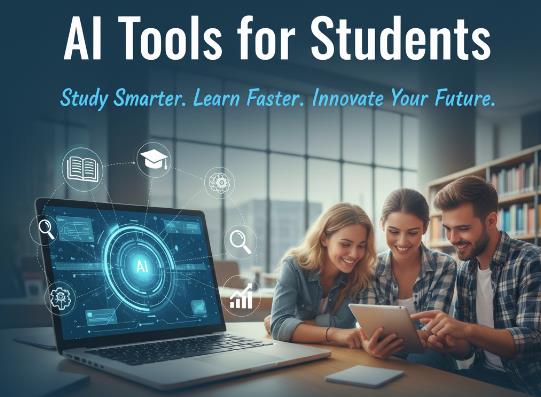
Some classrooms buzz with energy. Students ask questions, laugh at examples, and stay curious. Others feel heavy, like everyone’s watching the clock. The difference often lies in how they learn.
That’s where AI steps in. I first saw its potential while reading student discussions on NoCramming, a community where learners trade experiences about study tools and AI tutors. The posts didn’t sound like hype. They sounded like students figuring out what helps them learn.
The truth is simple: when technology listens, adapts, and interacts, students stop zoning out and start engaging.
Learning That Feels Personal
One of the most exciting things about AI in classrooms is personalisation. Traditional teaching usually moves at one speed, which doesn’t suit everyone. Adaptive learning tools like Century Tech and DreamBox change that. They observe how each student learns and adjust the material to fit.
If someone struggles with fractions, the program slows down, adds visuals, or gives practice problems. If another student races through algebra, it raises the difficulty. This steady calibration keeps boredom and frustration low. Students get small wins that build confidence and curiosity.
Teachers benefit, too. Instead of guessing who’s lost, they see real-time data on who needs attention.
AI Agents For Student Support in Education
Today’s AI agents act like learning companions rather than silent apps. They quiz, chat, and encourage reflection. A history bot might ask, “What do you think this event teaches us about leadership?” The question doesn’t test recall – it builds critical thinking.
These agents also create safe spaces for students who hesitate to speak up. A shy learner can type a question, get feedback, and build confidence to share in person next time. Over time, engagement spreads across the room because more voices join the discussion.
When Learning Becomes a Conversation
AI can’t replace human connection, but it can amplify it. Interactive tools prompt students to ask better questions and explain their reasoning out loud. That shift – from absorbing information to articulating it – turns passive listening into active learning.
Imagine a science class where an AI assistant helps students run virtual experiments, or a literature lesson where a chatbot discusses character motivation. These activities keep attention anchored on the topic instead of drifting to phones or daydreams.
For teachers, the data behind these tools helps refine lesson flow. If the AI detects that half the class is rewatching a concept video, that’s a signal to review the topic together. When educators respond to those insights, students see that feedback works both ways.
Staying on Track with AI Tools for Student Productivity
Even the most engaging lessons fail if students are exhausted or scattered. That’s where AI apps help manage time, concentration, and mental load.
Motion and Notion AI, for instance, can break long projects into small steps. Tools like Otter.ai or GrammarlyGO take over routine work like transcribing or proofreading.
Students also discover their productivity rhythms. After a week or two, the app might show that focus drops after 40 minutes or spikes in the evening. With that insight, learners can plan study sessions that match their natural pace.
The Most Helpful AI Tools for Students
Not every app lives up to the buzz. Below is a quick rundown of some of the most effective AI tools for students. These platforms were chosen because they blend ease of use, adaptability, and classroom value.
| Tool | Best for | Key features | Why students like it |
| GrammarlyGO | Writing assistance | Grammar fixes, tone rewrites, AI phrasing help | Speeds up essay writing without losing voice |
| Notion AI | Organization & note-taking | Task planning, AI summaries, smart reminders | Keeps study materials in one place |
| Quizlet | Memory-based learning | AI-generated flashcards, adaptive testing | Turns studying into a game |
| Otter.ai | Transcription & lectures | Records and transcribes classes instantly | Saves time and keeps notes searchable |
| Perplexity AI | Research help | Sources verification, quick Q&A summaries | Simplifies complex topics into clear insights |
| Khanmigo (Khan Academy) | Tutoring & explanations | Step-by-step reasoning, AI study coach | Feels like a personal tutor on demand |
| Elicit | Research organization | AI-supported literature review and data summaries | Ideal for essay prep and academic research |
| Socratic by Google | Homework guidance | AI explanations via camera or text | Makes tough concepts easier to understand |
Used right, these tools become quiet allies that keep motivation steady and study sessions productive.
Tracking the Impact
Schools now have numbers to measure the impact of AI on student engagement in education. Universities using adaptive and interactive tools report higher participation and lower dropout rates.
A 2024 peer-reviewed study across four countries found that AI-supported coursework significantly increases students’ intrinsic motivation and improves their learning experience.
For teachers, AI reduces busywork and gives clearer insight into learning patterns. Instead of spending evenings grading or checking attendance, they can spend that time on feedback and mentoring. The technology takes care of repetition so humans can focus on connection.
What works best:
- Adaptive lessons that respond to performance rather than forcing one path.
- AI chat tools that guide students to explain ideas in their own words.
- Simple productivity features that prevent overload.
What to watch out for:
- Relying on automation in place of group interaction.
- Neglecting privacy and consent when collecting student data.
- Assuming every new app automatically improves learning.
In short, AI succeeds when it supports curiosity, not when it tries to run the classroom.
Listening to Students
Real engagement grows when students are part of the conversation. Surveys on student perspectives on AI in higher education show that most learners value AI’s flexibility but want transparency about how it works.
They like tools that help them manage workload and stay motivated, but they’re quick to notice when technology feels impersonal.
In feedback sessions, many students describe AI as a “study partner,” not a teacher. They appreciate guidance and reminders but want final control over their process. That sense of agency keeps learning human even when algorithms are involved.
When schools listen to that feedback and adapt accordingly, the technology evolves alongside the people who use it.
Wrapping Up
AI tools for student engagement in education are reshaping how classrooms function. They personalise lessons, prompt reflection, and make studying less of a solo struggle. When combined with thoughtful teaching and honest feedback from students, they turn learning into a shared experience.
Technology alone won’t keep students engaged – but when it’s used to empower, not replace, human effort, it brings the classroom to life.




